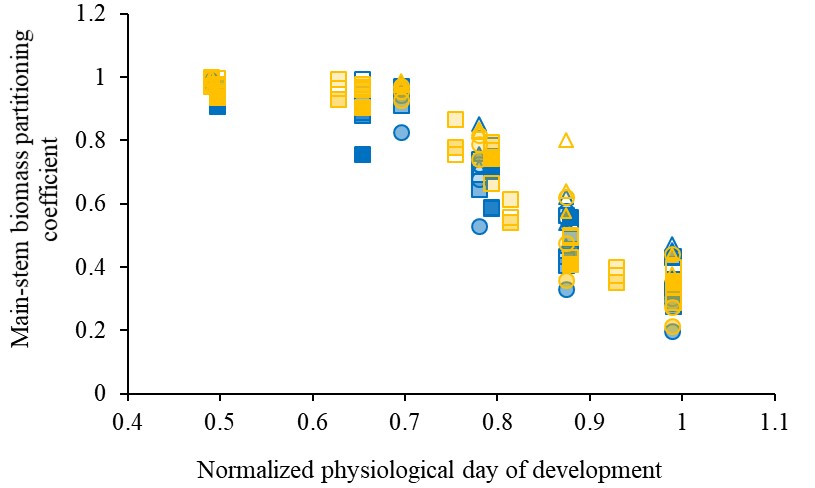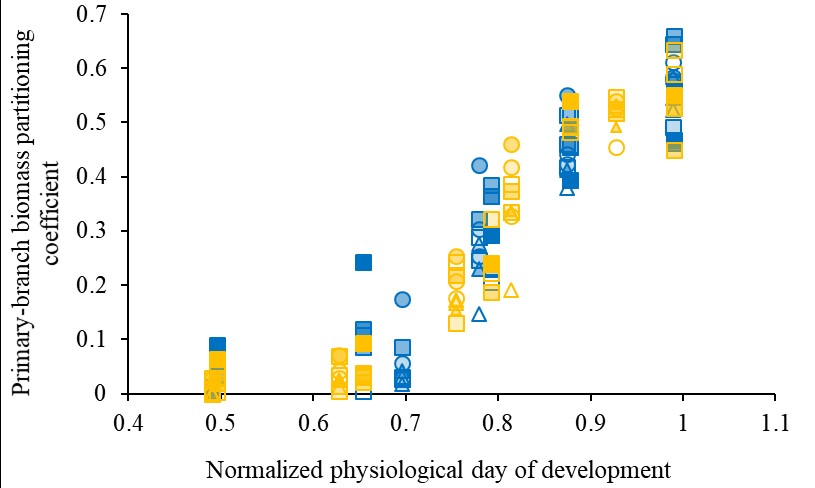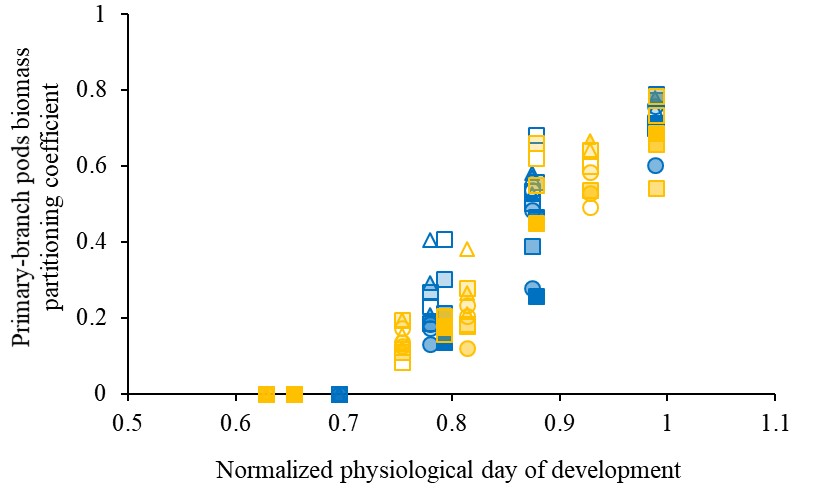The morphological structure of a shoot creates the spatial distribution of the leaves, which determines the photosynthetic production of the plants by affecting light interception. The allocation, translocation, and partitioning of biomass make organs grow and produce new organs, which changes the plant's morphological structure in turn. Plant growth can be understood as a series of such processes. Thus, biomass is the result of plant function and is also the material base that forms the plant structure. Biomass partitioning is, therefore, a pivotal part of the function-structure feedback mechanism and is the key to building functional-structural plant models. However, biomass partitioning in previous rapeseed models divided biomass into root, stem, leaf, and pods at the whole-plant scale, without further break down to branch level. This shortcoming limited their combination with morphological models that are accurate to branch and individual organ scale.
To improve the simulation of aboveground biomass partitioning in growth models for rapeseed (Brassica napus L.), we developed an aboveground biomass partitioning coefficient model for main stem and primary branches, and the stems, leaves, and pods on them, by quantifying the relationships between the biomass partitioning coefficient of major organs aboveground and physiological day of development (DPD). To realize this goal, dry matter data of organs were derived from an outdoor experiment with rapeseed cultivars Ningyou18 and Ningza19 under different fertilizer and transplanting density treatments in the 2012-2015 growing seasons. The model was fitted by calculating the partitioning coefficients of different organs as the ratio of the biomass of organs and their superior organs and normalizing DPD into the [0, 1] interval. The MMF model was chosen as the model form because of the higher fitting degree and the better interpretability of model parameters. Various model variables were parameterized to explain the effects of cultivar and environmental conditions on biomass partitioning coefficients for different organs. Our descriptive models were validated with independent experimental data, the correlation (r) of simulation and observation values all had significant level at P<0.001, the absolute values of the average absolute difference (da) are all less than 0.062, except for the main-stem pods, primary branch, primary-branch leaves model, the ratio of da to the average observation (dap) are all less than 6.263%, and r are all greater than 0.9 except primary-branch leaves and primary-branch stems model. The results showed that most models have good performance and reliability for predicting biomass partitioning coefficient of the main stem, the primary branch, and the organs on them.
The model further partitioned the community biomass simulated by the growth model to the main stem and primary branches, and the organs on them by calculating the appropriate partitioning coefficients. It can be used as a bridge to link the existing morphological models with the growth and development model by the biomass partitioning, and allowing the morphological model to respond to changes in environment and management practices by inheriting the attribute of biomass from the growth and development model. This makes a combination of structures with functions and sets the stage for the establishment of functional-structural rapeseed models.
Relevant research results were published in Field Crops Research (https://doi.org/10.1016/j.fcr.2020.107966). Associate professor Wenyu Zhang is the first author, and professor Hongxin Cao is the corresponding author.









C1: Ningyou 18, C2: Ningza 19; D1 = 6×104 plant ha-1; D2 = 1.2×105 plant ha-1; D3 = 1.8×105 plant ha-1; N0: no fertilizer; N1 = 90 kg N ha-1; N2 = 180 kg N ha-1; N3 = 270 kg N ha-1; N4 = 360 kg N ha-1
Fig. 1 The changes in the biomass partitioning coefficients with normalized DPD under different treatments in 2012-2013 and 2014-2015 growing season.


